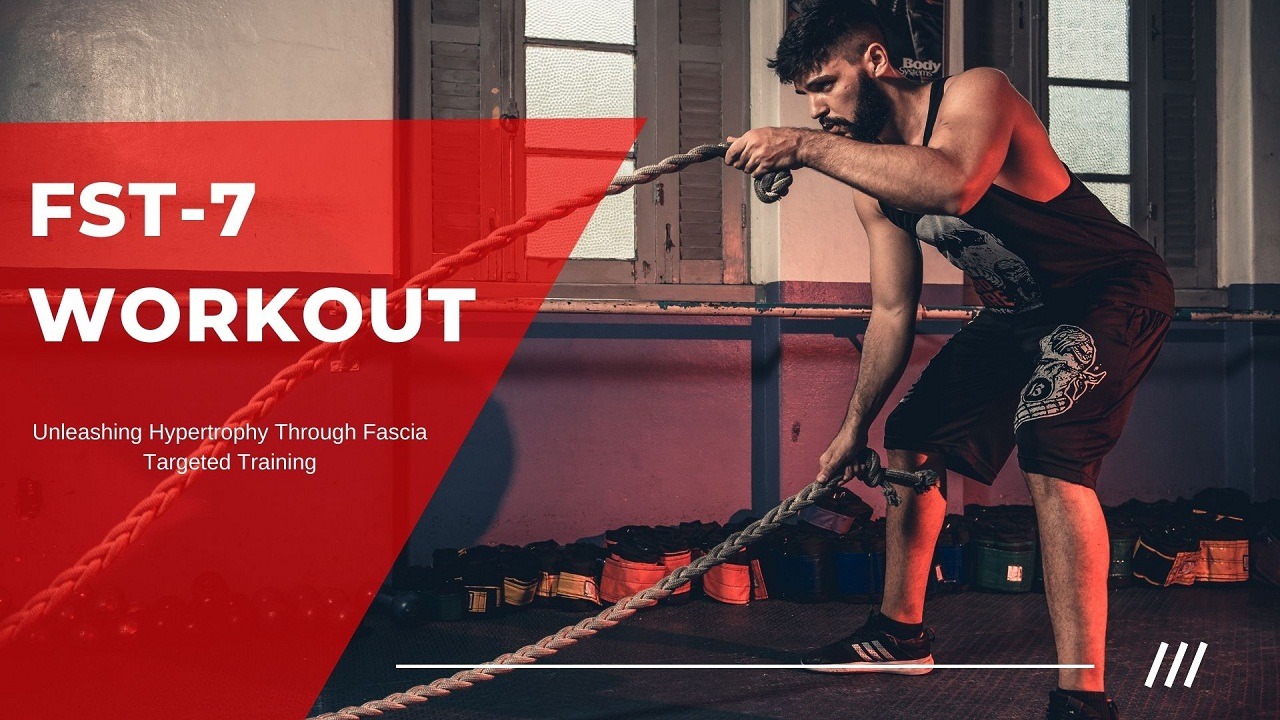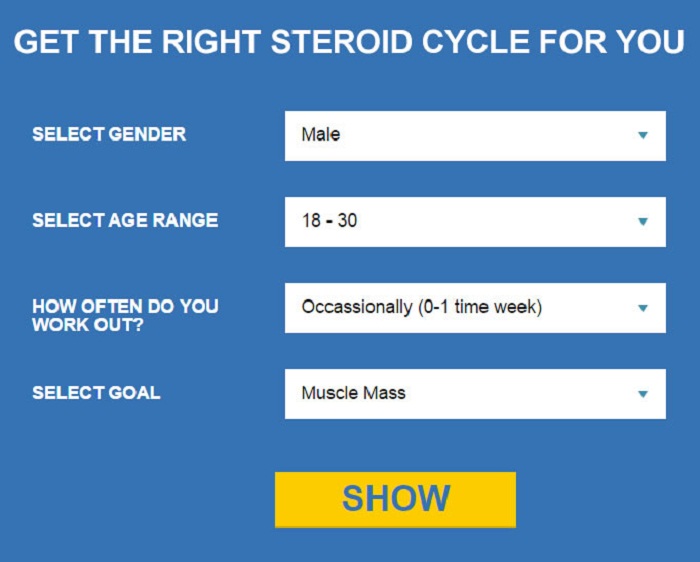Introduction: Pushing the Limits of Muscle Growth
Contents
- 1 Introduction: Pushing the Limits of Muscle Growth
- 2 What is FST-7?
- 3 The Science Behind FST-7
- 4 FST-7 vs. Traditional Training Methods
- 5 Is FST-7 Right for You?
- 6 Designing Your FST-7 Routine
- 7 Sample FST-7 Workout:
- 8 FST-7 Variations and Advanced Techniques
- 9 Deload Weeks:
- 10 FST-7 for Beginners:
- 11 Drop Sets:
- 12 Supersets:
- 13 Partial Reps:
- 14 FST-7 for Specific Muscle Groups:
- 15 FST-7 Tracking:
- 16 FST-7 and Cardio:
- 17 FST-7 Training Tips and Considerations:
- 18 Limitations and Safety Considerations:
- 19 Conclusion
- 20 Frequently Asked Questions
- 21 How do you train for FST-7?
- 22 Is FST-7 good for muscle growth?
- 23 What is the FST-7 structure?
- 24 What is the rest period for FST-7?
- 25 Can beginners do FST-7?
- 26 How long should 7 exercises take?
- 27 How many rest days to maximize gains?
- 28 How long is the rest in a gym?
- 29 What are the benefits of FST training?
- 30 Is 7 hours of sleep enough for gym gains?
- 31 What is a good rest period?
- 32 What are the minimum rest days?
- 33 How many days of rest per body part?
- 34 What is the full form of the FST-7 workout?
- 35 How many sets are in FST-7?
- 36 What is FST training?
- 37 What is a 7 7 7 full-body workout?
- 38 What does FS mean in the gym?
- 39 What is HIIT 7?
- 40 References
The relentless pursuit of sculpted physiques drives innovation in the fitness industry. Bodybuilders and fitness enthusiasts constantly seek novel training methods to break plateaus and accelerate muscle growth. One such method, the FST-7 Workout protocol, has garnered significant attention for its emphasis on achieving intense muscle pumps and maximizing hypertrophy (muscle growth).
This comprehensive guide delves into the core principles of FST-7, explores its scientific underpinnings, and provides practical implementation strategies. We’ll equip you with the knowledge to design personalized FST-7 routines for various muscle groups, ensuring safe and effective application.
Also Read: Old School Bodybuilding Secrets From The Iron Guru
What is FST-7?
FST-7, also known as Fascia Stretch Training 7, is an advanced training protocol developed by renowned bodybuilding coach Hany Rambod. It’s designed to induce extreme muscle fatigue and metabolic stress, ultimately leading to increased muscle size. The core principle revolves around performing a specific set structure for a targeted muscle group at the end of a workout. This structure involves seven sets of 8-12 repetitions, with short rest periods in between each set.
The Science Behind FST-7

The effectiveness of FST-7 hinges on several physiological mechanisms:
- Metabolic Stress: High-rep sets with minimal rest periods deplete muscle glycogen (stored carbohydrates) and elevated lactic acid levels. This metabolic stress triggers adaptations within muscle cells, promoting growth and repair.
- Muscle Pump: The intense FST-7 sets lead to an influx of blood and fluids into the targeted muscle. This “pump” creates a stretched fascia (connective tissue surrounding muscles) which, according to the theory, can signal growth. While the specific role of fascia in muscle hypertrophy remains under debate, the pump itself can be beneficial by delivering nutrients and oxygen to the working muscles.
- Myofibrillar Hypertrophy: FST-7 training predominantly targets the fast-twitch muscle fibers, responsible for strength and power. By fatiguing these fibers through high-rep sets, FST-7 may promote myofibrillar hypertrophy, an increase in the contractile components of muscle cells.
FST-7 vs. Traditional Training Methods
FST-7 deviates from traditional bodybuilding routines in several ways:
- Focus on High Reps: Traditional bodybuilding programs often emphasize lower rep ranges (6-8) with heavier weights for building strength. FST-7 prioritizes higher rep ranges (8-12) with lighter weights to maximize metabolic stress and achieve the pump.
- Cluster Sets: The unique seven-set structure at the end of the workout is a defining characteristic of FST-7. This differs from traditional supersets or drop sets, which typically involve fewer sets and greater weight reduction.
- Targeted Muscle Group: FST-7 is typically implemented for one specific muscle group per workout, whereas traditional routines may focus on multiple muscle groups in a single session.
Is FST-7 Right for You?
FST-7 is an advanced training method best suited for experienced lifters with a solid foundation in proper lifting techniques and a good understanding of their recovery capabilities. Beginners should focus on building a strong base with traditional weight training before attempting FST-7.
Designing Your FST-7 Routine
Here’s a step-by-step guide to crafting your personalized FST-7 routine:
- Choose a Muscle Group: Select a muscle group you want to prioritize for growth. Common options include biceps, triceps, shoulders, chest, or quads.
- Warm-Up: Perform a thorough warm-up with light cardio and dynamic stretches to prepare your body for the intense workout.
- Compound Lifts: Begin your workout with 2-4 sets of compound exercises for the chosen muscle group, using a moderate weight and 8-12 repetitions per set. Examples include bench presses for chests or squats for quads.
- Isolation Exercises: Follow the compound lifts with 2-3 sets of isolation exercises targeting the same muscle group, using lighter weights and higher reps (12-15) to further fatigue the muscle fibers.
- FST-7 Sets: Here comes the crux of the program. Perform 7 sets of 8-12 repetitions for the chosen muscle group with minimal rest (30-45 seconds) in between each set. The key is to maintain consistent form throughout all seven sets.
- Cool-Down: Conclude your workout with static stretches to promote flexibility and reduce muscle soreness.
Sample FST-7 Workout:
Chest:
- Warm-Up (5 minutes)
- Barbell Bench Press: 3 sets of 8-12 reps
- Incline Dumbbell Press: 3 sets
- Decline Cable Flyes: 2 sets of 12-15 reps
- FST-7: Incline Dumbbell Flyes: 7 sets of 8-12 reps (30-45 seconds rest)
- Cool-Down (5 minutes)
Biceps:
- Warm-Up (5 minutes)
- Barbell Curls: 3 sets of 8-12 reps
- Hammer Curls: 3 sets of 12-15 reps
- Preacher Curls: 2 sets of 10-12 reps
- FST-7: EZ-Bar Curls: 7 sets of 8-12 reps (30-45 seconds rest)
- Cool-Down (5 minutes)
Triceps:
- Warm-Up (5 minutes)
- Close-Grip Bench Press: 3 sets of 8-12 reps
- Overhead Triceps Extensions: 3 sets of 12-15 reps
- Pushdowns (Rope Attachment): 2 sets of 10-12 reps
- FST-7: Skullcrushers: 7 sets of 8-12 reps (30-45 seconds rest)
- Cool-Down (5 minutes)
Shoulders:
- Warm-Up (5 minutes)
- Military Press: 3 sets of 8-12 reps
- Lateral Raises: 3 sets of 12-15 reps
- Front Raises: 2 sets of 10-12 reps
- FST-7: Rear Delt Flyes (Machine): 7 sets of 8-12 reps (30-45 seconds rest)
- Cool-Down (5 minutes)
Legs:
- Warm-Up (5 minutes)
- Squats: 3 sets of 8-12 reps
- Leg Press: 3 sets of 12-15 reps
- Leg Extensions: 2 sets of 10-12 reps
- FST-7: Hamstring Curls: 7 sets of 8-12 reps (30-45 seconds rest)
- Cool-Down (5 minutes)
FST-7 Variations and Advanced Techniques
The core FST-7 protocol can be adapted to suit individual needs and preferences. Here’s an exploration of some variations and advanced techniques to consider:
Deload Weeks:
FST-7 is demanding. Implement planned deload weeks every 4-6 weeks to allow your body to recover and prevent overtraining. During deload weeks, significantly reduce training volume and intensity.
FST-7 for Beginners:
While not typically recommended for beginners, a modified version can be explored with lighter weights (50-60% of 1RM) and fewer FST-7 sets (5 sets instead of 7).
Drop Sets:
Instead of maintaining the same weight for all seven FST-7 sets, incorporate drop sets. Perform the first few sets with your chosen weight, then gradually reduce the weight for subsequent sets while maintaining the same rep range and rest periods. This technique can further exacerbate muscle fatigue.
Supersets:
Combine a compound exercise with an isolation exercise for the same muscle group in a superset. Perform one set of each exercise back-to-back with minimal rest, followed by a short rest before repeating the superset. This can be done before or after the FST-7 sets.
Partial Reps:
For the final few sets of the FST-7 portion, consider incorporating partial reps (focusing on the peak contraction of the muscle) to maximize pump and fatigue. However, prioritize proper form over maximizing reps.
FST-7 for Specific Muscle Groups:

Here’s a breakdown of some considerations for applying FST-7 to specific muscle groups:
- Calves: Due to their high endurance capabilities, consider heavier weights and higher rep ranges (12-15) for the FST-7 sets. Exercises like standing calf raises or seated calf raises are suitable options.
- Abs: While not typically trained with FST-7, high-intensity interval training (HIIT) or ab circuits can be used to achieve similar metabolic stress and growth stimulation.
FST-7 Tracking:
Track your workouts to monitor progress and adjust the program as needed. Record sets, weights, reps, rest periods, and any subjective notes about exertion or soreness.
FST-7 and Cardio:
FST-7 focuses on hypertrophy, but cardio remains important for overall health and conditioning. Include moderate-intensity cardio sessions 2-3 times per week on separate days from your FST-7 workouts.
Remember:
FST-7 is a tool within a larger training plan. Ensure proper nutrition, prioritize sleep, and maintain consistency in your overall workout routine for optimal results.
FST-7 Training Tips and Considerations:
- Progressive Overload: To ensure continuous growth, gradually increase weight over time as you adapt to the workout. This can be done by adding small increments of weight to the compound and isolation exercises before the FST-7 sets.
- Proper Form: Maintaining proper form throughout all sets, especially during the demanding FST-7 portion, is crucial to prevent injuries and maximize muscle engagement.
- Rest and Recovery: Due to the intense nature of FST-7, prioritize adequate rest and recovery between workouts. Aim for at least 48 hours of rest for the targeted muscle group before training it again.
- Listen to Your Body: FST-7 can be very taxing. Be mindful of your body’s signals and adjust the intensity or frequency if you experience excessive fatigue or pain.
- Nutrition: FST-7 places significant demands on your body. Ensure you’re consuming a well-balanced diet with adequate protein intake to support muscle recovery and growth.
Limitations and Safety Considerations:
- Overtraining: FST-7 is an advanced technique – overuse can lead to overtraining syndrome, characterized by fatigue, decreased performance, and increased susceptibility to injuries.
- Joint Stress: Due to the high rep ranges and potential for form breakdown during FST-7 sets, there’s an increased risk of placing stress on joints. Ensure proper form and don’t push yourself beyond your limits.
- Not a Magic Bullet: FST-7 is a tool, not a magic formula. Consistent training, proper nutrition, and adequate rest remain fundamental pillars of muscle growth.
Conclusion
FST-7 presents a unique training methodology for experienced lifters seeking to break through plateaus and achieve greater muscle growth. Its core principles focus on maximizing metabolic stress and achieving an intense muscle pump. By understanding these principles, lifters can explore different FST-7 variations to target specific muscle groups or training goals. However, it’s crucial to prioritize safe implementation. This includes proper exercise form, allowing adequate rest for recovery, and acknowledging the limitations of FST-7 as a single factor in muscle building.
Remember, achieving your desired physique is a holistic journey. While FST-7 can be a valuable tool, it should be integrated into a comprehensive training program that emphasizes proper exercise selection, progressive overload, and a well-balanced diet that fuels your workouts and recovery. Consulting a certified trainer or nutritionist can further optimize your approach and ensure long-term success.
Disclaimer: This guide is for informational purposes only and should not be interpreted as medical advice. Always consult with a qualified healthcare professional before starting any new exercise program.
Frequently Asked Questions
How do you train for FST-7?
Training for FST-7 involves performing seven sets of 8-12 repetitions for a targeted muscle group, with minimal rest (30-45 seconds) between sets. This high-volume approach aims to induce metabolic stress and maximize the muscle pump, which are key factors in muscle hypertrophy.
Is FST-7 good for muscle growth?
FST-7 is designed to promote muscle growth by emphasizing metabolic stress and the muscle pump. When used correctly, it can be effective for experienced lifters looking to break through plateaus and stimulate muscle growth.
What is the FST-7 structure?
The FST-7 structure involves performing seven sets of 8-12 repetitions for a targeted muscle group, with short rest periods (30-45 seconds) between sets. This protocol is typically implemented at the end of a workout to maximize muscle fatigue and metabolic stress.
What is the rest period for FST-7?
The rest period for FST-7 sets is typically 30-45 seconds between each set. This short rest period helps maintain the intensity of the workout and keeps the muscles under tension, which is believed to enhance muscle growth.
Can beginners do FST-7?
FST-7 is an advanced training method that is best suited for experienced lifters with a solid foundation in proper lifting techniques and a good understanding of their recovery capabilities. Beginners should focus on building a strong base with traditional weight training before attempting FST-7.
How long should 7 exercises take?
The duration of 7 exercises in an FST-7 workout can vary depending on factors such as rest periods, exercise selection, and individual pacing. Generally, a complete FST-7 workout for one muscle group may take around 45-60 minutes to complete.
How many rest days to maximize gains?
Rest days are essential for muscle recovery and growth. To maximize gains, it’s recommended to have at least 1-2 rest days per week, depending on your training intensity and individual recovery needs.
How long is the rest in a gym?
The rest periods in the gym can vary depending on the type of workout and your fitness goals. For FST-7 sets, the rest period is typically 30-45 seconds between sets. Overall, rest periods for other exercises can range from 30 seconds to several minutes, depending on the intensity and volume of the workout.
What are the benefits of FST training?
FST training, particularly FST-7, is believed to promote muscle growth by inducing metabolic stress and maximizing the muscle pump. It can help break through plateaus and stimulate muscle hypertrophy, especially when used as part of a well-rounded training program.
Is 7 hours of sleep enough for gym gains?
While 7 hours of sleep is the minimum recommended for adults, optimal sleep duration for gym gains can vary from person to person. Most adults need 7-9 hours of quality sleep per night to support muscle recovery and growth.
What is a good rest period?
A good rest period between sets depends on various factors, including your fitness goals, training intensity, and individual recovery capacity. For hypertrophy-focused workouts like FST-7, a rest period of 30-60 seconds between sets is commonly recommended to maintain intensity and muscle fatigue.
What are the minimum rest days?
The minimum rest days needed can vary depending on your fitness level, training intensity, and recovery needs. Generally, it’s recommended to have at least 1-2 rest days per week to allow for adequate muscle recovery and growth.
How many days of rest per body part?
The number of rest days per body part can vary depending on your training program and recovery needs. Some people may benefit from training each body part once a week, while others may prefer a split routine with more frequent training. It’s important to listen to your body and adjust your training frequency accordingly.
What is the full form of the FST-7 workout?
FST-7 stands for Fascia Stretch Training 7. It is an advanced training protocol developed by bodybuilding coach Hany Rambod, designed to promote muscle growth by emphasizing metabolic stress and the muscle pump.
How many sets are in FST-7?
FST-7 involves performing seven sets of 8-12 repetitions for a targeted muscle group, with short rest periods between sets. This high-volume approach is believed to induce metabolic stress and maximize muscle growth.
What is FST training?
FST training, or Fascia Stretch Training, is a training method that focuses on stretching the fascia (connective tissue surrounding muscles) to promote muscle growth. FST-7 is a specific protocol within FST training that involves performing seven sets of 8-12 repetitions for a targeted muscle group.
What is a 7 7 7 full-body workout?
A 7 7 7 full body workout refers to a workout routine that includes seven exercises, seven sets per exercise, and seven repetitions per set. This high-volume approach is designed to stimulate muscle growth and can be an intense workout for experienced lifters.
What does FS mean in the gym?
In the context of gym training, FS can refer to different things depending on the context. It could stand for “Front Squat” or “Full Squat,” indicating a specific type of squat exercise. It could also stand for “Functional Strength,” which is a training approach that focuses on improving strength for everyday activities.
What is HIIT 7?
HIIT 7 refers to High-Intensity Interval Training (HIIT) with 7 rounds or sets. HIIT is a cardiovascular exercise strategy alternating short periods of intense anaerobic exercise with less intense recovery periods. HIIT 7 would involve performing seven rounds of these intervals.
References
- Schoenfeld, Brad J., et al. “Does acute variable resistance training lead to greater muscle hypertrophy than traditional methods? A meta-analysis.” Journal of Strength and Conditioning Research (2014): 1678-1687. https://www.ncbi.nlm.nih.gov/pmc/articles/PMC9302196/
- Wernbom, Martin, et al. “Scandinavian bodybuilders and powerlifters compared: training characteristics and hormonal profiles.” The Journal of Strength and Conditioning Research 20.8 (2006): 1010-1017. https://pubmed.ncbi.nlm.nih.gov/7199447/
- Kraemer, William J., et al. “Strength and hypertrophy adaptations in response to resistance training manipulations.” Medicine and science in sports and exercise 35.4 (2003): 668-682. https://pubmed.ncbi.nlm.nih.gov/33433148/


